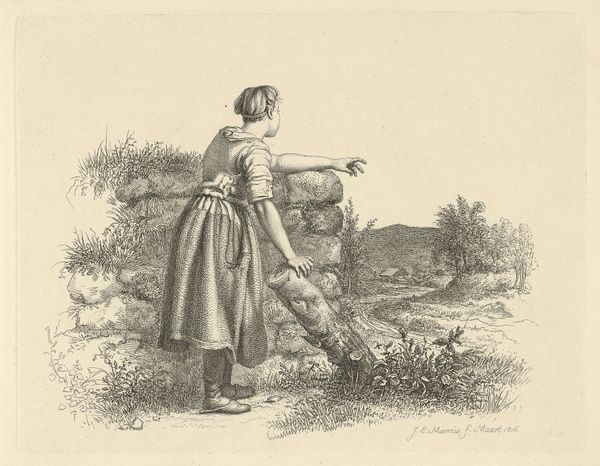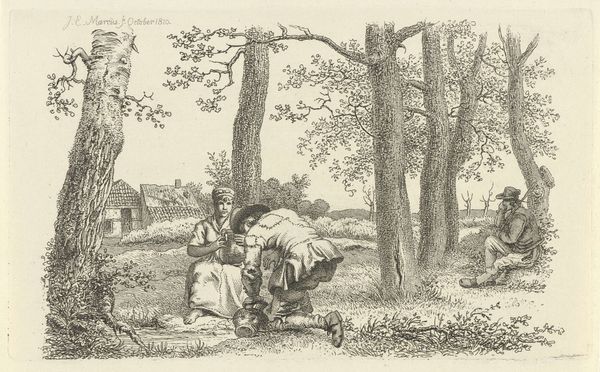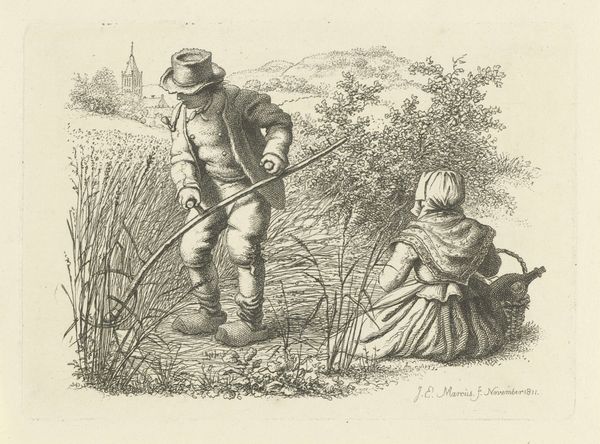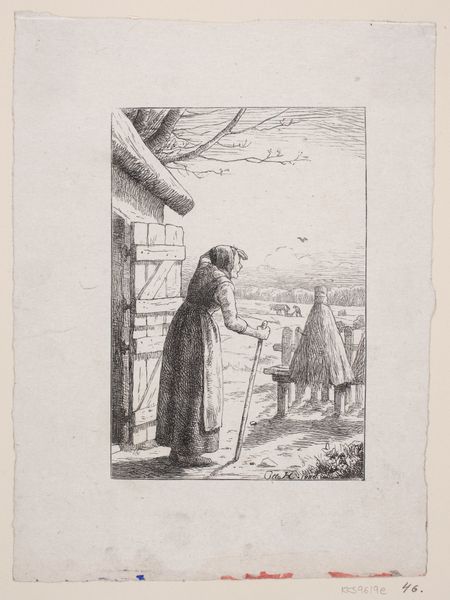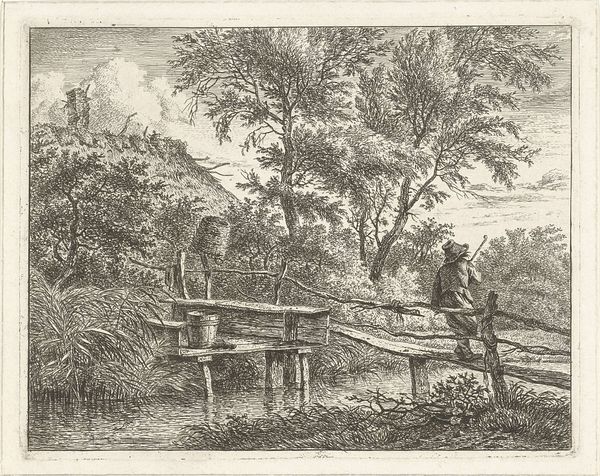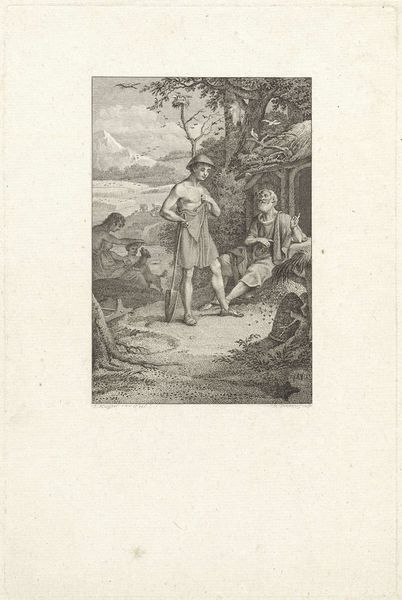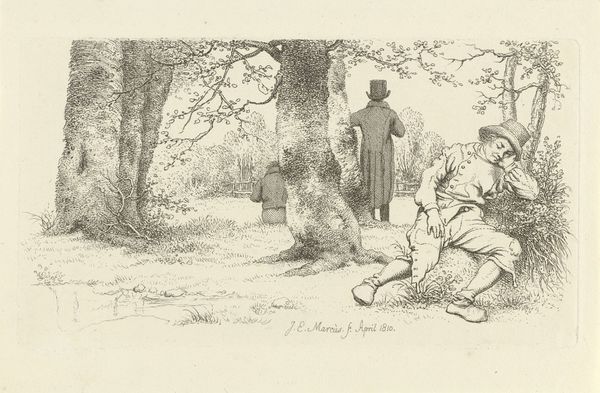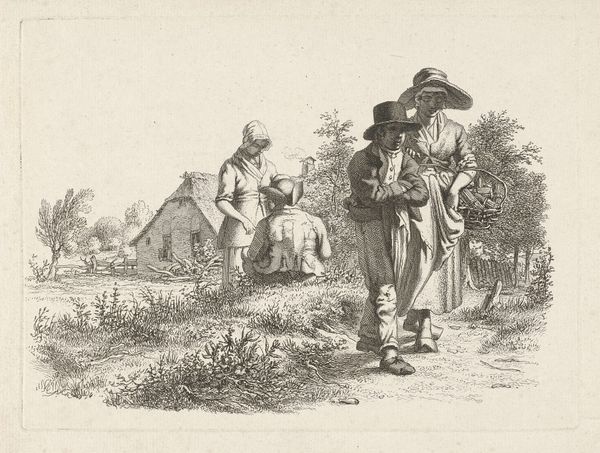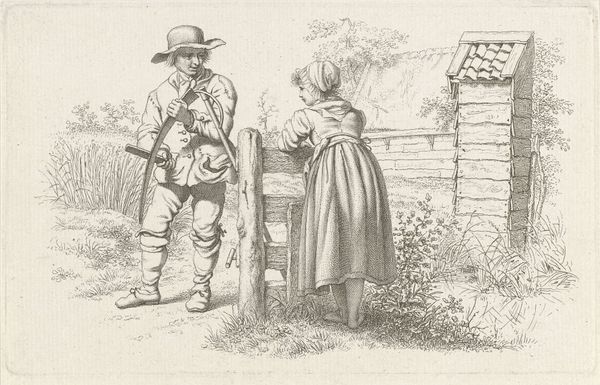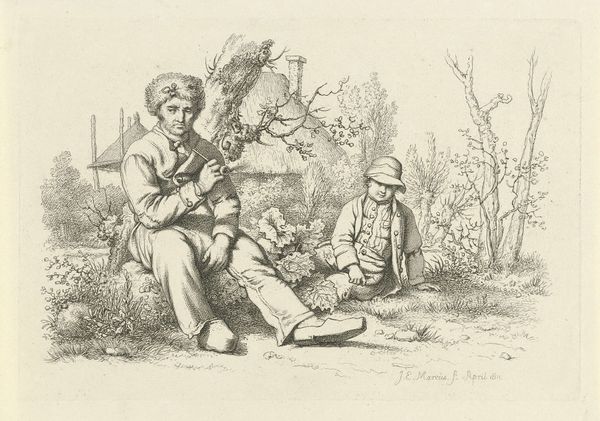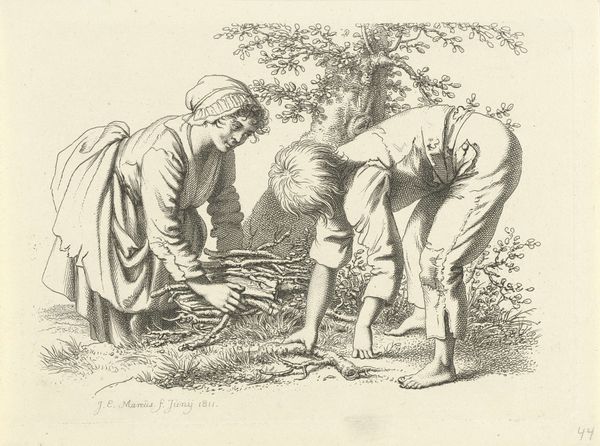
drawing, pencil, pen
#
portrait
#
drawing
#
quirky sketch
#
pencil sketch
#
landscape
#
personal sketchbook
#
idea generation sketch
#
sketchwork
#
romanticism
#
pen-ink sketch
#
pencil
#
sketchbook drawing
#
pen
#
genre-painting
#
storyboard and sketchbook work
#
fantasy sketch
#
initial sketch
Dimensions: height 162 mm, width 200 mm
Copyright: Rijks Museum: Open Domain
This print, "Tekenaar en een boerenmeisje," or "Draftsman and a Farmer's Daughter," was made in 1810 by Jacob Ernst Marcus. As a print, it would have been made through a reproductive process involving multiple steps and likely a division of labor, a contrast to the individualized labor shown in the image. Look closely, and you’ll notice the contrasting figures of the artist and the barefoot farmer's daughter. One sits formally dressed, engaged in the creative act of representation; the other stands at a rustic gate, grounded to the earth. The print medium itself invites us to consider how art mediates between social classes. The fine lines of the etching, the textures of the clothing, and the surrounding landscape detail the era's social fabric. The labor-intensive process of printmaking mirrors, in a way, the broader social issues of labor, class, and the representation of everyday life. By understanding the materials, making, and context of this artwork, we can appreciate how it challenges traditional distinctions between fine art and craft.
Comments
No comments
Be the first to comment and join the conversation on the ultimate creative platform.
